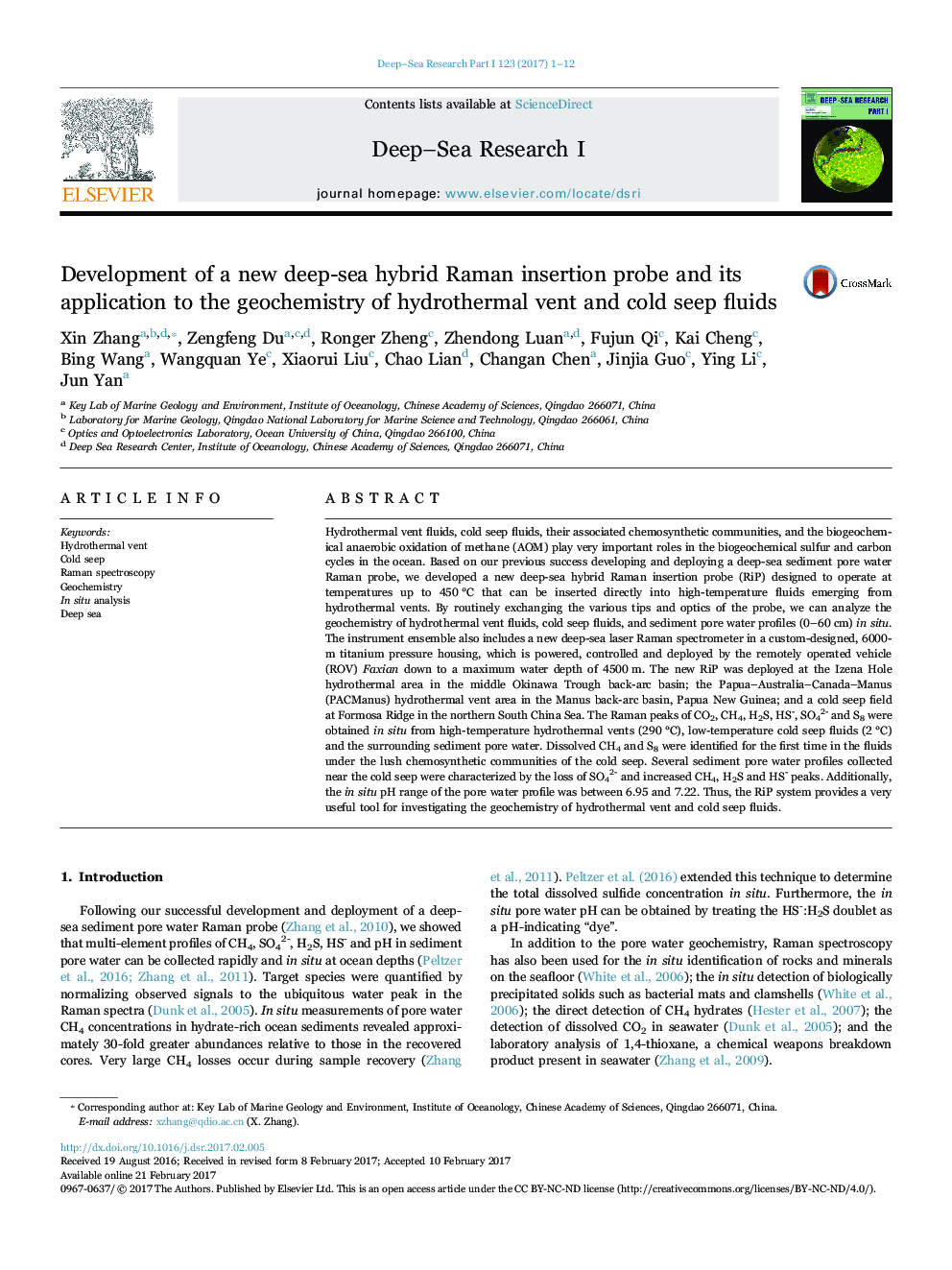| کد مقاله | کد نشریه | سال انتشار | مقاله انگلیسی | نسخه تمام متن |
|---|---|---|---|---|
| 5764721 | 1626307 | 2017 | 12 صفحه PDF | دانلود رایگان |
- A new deep-sea hybrid Raman insertion probe rated to 4500Â m was developed.
- The probe can be directly inserted into hydrothermal vents up to 450 °C.
- In situ Raman measurements of hydrothermal vent fluids were made at >1700Â m.
- Dissolved CH4 and S8 were found under cold seep chemosynthetic communities.
- Quantitative Raman techniques were used to determine the geochemistry of cold seep fluids and pore water.
Hydrothermal vent fluids, cold seep fluids, their associated chemosynthetic communities, and the biogeochemical anaerobic oxidation of methane (AOM) play very important roles in the biogeochemical sulfur and carbon cycles in the ocean. Based on our previous success developing and deploying a deep-sea sediment pore water Raman probe, we developed a new deep-sea hybrid Raman insertion probe (RiP) designed to operate at temperatures up to 450 °C that can be inserted directly into high-temperature fluids emerging from hydrothermal vents. By routinely exchanging the various tips and optics of the probe, we can analyze the geochemistry of hydrothermal vent fluids, cold seep fluids, and sediment pore water profiles (0-60 cm) in situ. The instrument ensemble also includes a new deep-sea laser Raman spectrometer in a custom-designed, 6000-m titanium pressure housing, which is powered, controlled and deployed by the remotely operated vehicle (ROV) Faxian down to a maximum water depth of 4500 m. The new RiP was deployed at the Izena Hole hydrothermal area in the middle Okinawa Trough back-arc basin; the Papua-Australia-Canada-Manus (PACManus) hydrothermal vent area in the Manus back-arc basin, Papua New Guinea; and a cold seep field at Formosa Ridge in the northern South China Sea. The Raman peaks of CO2, CH4, H2S, HS-, SO42- and S8 were obtained in situ from high-temperature hydrothermal vents (290 °C), low-temperature cold seep fluids (2 °C) and the surrounding sediment pore water. Dissolved CH4 and S8 were identified for the first time in the fluids under the lush chemosynthetic communities of the cold seep. Several sediment pore water profiles collected near the cold seep were characterized by the loss of SO42- and increased CH4, H2S and HS- peaks. Additionally, the in situ pH range of the pore water profile was between 6.95 and 7.22. Thus, the RiP system provides a very useful tool for investigating the geochemistry of hydrothermal vent and cold seep fluids.
Journal: Deep Sea Research Part I: Oceanographic Research Papers - Volume 123, May 2017, Pages 1-12
